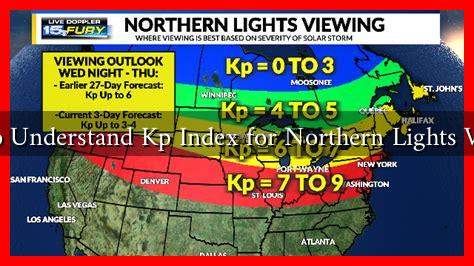-
Table of Contents
How to Understand Kp Index for Northern Lights Viewing
The Northern Lights, or Aurora Borealis, are one of nature’s most breathtaking phenomena, captivating millions of viewers each year. However, witnessing this spectacular light show requires more than just being in the right place; understanding the Kp index is crucial for maximizing your chances of seeing the auroras. This article will delve into what the Kp index is, how it affects Northern Lights visibility, and tips for planning your viewing experience.
What is the Kp Index?
The Kp index is a scale that measures geomagnetic activity on a scale from 0 to 9. Developed by the University of Berlin, it provides a standardized way to gauge the intensity of geomagnetic storms caused by solar wind and solar flares. The Kp index is particularly important for aurora hunters because it indicates how far south the auroras may be visible.
Understanding the Kp Scale
The Kp index is categorized as follows:
- Kp 0-1: No auroras visible; very low geomagnetic activity.
- Kp 2-3: Auroras may be visible in high-latitude regions; limited visibility.
- Kp 4: Auroras can be seen in northern parts of the U.S.
. and Canada.
- Kp 5: Auroras may be visible in the central U.S. and parts of Europe.
- Kp 6-7: Auroras can be seen much further south, including states like Colorado and as far south as northern California.
- Kp 8-9: Major geomagnetic storms; auroras visible in many parts of the U.S. and even in southern regions.
Understanding this scale is essential for planning your Northern Lights viewing trip. The higher the Kp index, the further south the auroras can be seen, making it possible for more people to experience this natural wonder.
Factors Influencing the Kp Index
Several factors contribute to the fluctuations in the Kp index:
- Solar Activity: Solar flares and coronal mass ejections (CMEs) release charged particles that interact with Earth’s magnetic field, increasing geomagnetic activity.
- Time of Year: The best time to view the Northern Lights is during the winter months when nights are longer and skies are darker.
- Location: Proximity to the magnetic poles increases your chances of seeing the auroras. Locations like Alaska, Canada, and Scandinavia are prime spots.
How to Use the Kp Index for Planning Your Trip
To effectively use the Kp index for planning your Northern Lights viewing, consider the following tips:
- Check Forecasts: Websites like NOAA’s Space Weather Prediction Center provide real-time Kp index forecasts.
- Stay Flexible: Weather conditions can change rapidly; be prepared to move to different locations if necessary.
- Use Apps: Several mobile applications can alert you when the Kp index reaches a certain level, helping you stay informed.
Case Studies: Successful Northern Lights Viewing
Many travelers have successfully witnessed the Northern Lights by closely monitoring the Kp index. For instance, a group of tourists in Fairbanks, Alaska, planned their trip around a predicted Kp index of 6. Their flexibility allowed them to chase the auroras across different locations, resulting in a stunning display that left them in awe.
Another example is a family who traveled to Tromsø, Norway, during a solar storm that pushed the Kp index to 8. They were able to see the auroras dancing across the sky, a memory they cherish to this day.
Conclusion
Understanding the Kp index is essential for anyone hoping to witness the Northern Lights. By familiarizing yourself with the scale, monitoring solar activity, and planning your trip accordingly, you can significantly increase your chances of experiencing this natural wonder. Remember to stay flexible and use available resources to track geomagnetic activity. With the right preparation, you can turn your Northern Lights dream into a reality.
For more information on the Kp index and aurora forecasts, visit NOAA’s Space Weather Prediction Center.





